#Frequency Modulation (FM)
Explore tagged Tumblr posts
Text
The History Of Television
Television refers to a system for transmitting visual images and sound that are reproduced on screens, primarily to broadcast programs for entertainment, information, and education. History of Television Early Concepts and Development: 1870s-1900s: The concept of transmitting images wirelessly dates back to the late 19th century. Paul Nipkow’s invention of the Nipkow disk in 1884 was an early…
#4K#8K#ABC#Amazon Prime Video#Amplitude Modulation (AM)#Analog TV Waves#broadcast#cable television#cathode ray tube (CRT)#CBS#Charles Francis Jenkins#Color television#digital streaming services#Digital TV Waves#DigitalTelevision#Electromagnetic Waves#Frequency Modulation (FM)#gamma rays#HD#HDTV#High-Definition Television#History Of Television#Hulu#infrared#John Logie Baird#Light Emitting Diode (LED)#Liquid Crystal Display (LCD)#microwaves#Modulation#NBC
4 notes
·
View notes
Text
Sine gotta be my favorite sound wave. Low frequency sub bass? Beautiful. High end bubbly pluck? Delicious. Tube distortion or Sine Shaping distortion? Unbelievable. But saw-to-sine frequency modulation? Impeccable. Amazing. Perfect. Saw-to-sine frequency modulation my beloved. Sine wave, is there nothing you cannot do?
0 notes
Text
Adaptability Part 2
Relationship(s): Bodhi Durran/female!reader
Warnings: Canon-typical violence
A/N: Sorry this part is so much shorter than the first. I feel like it wraps the whole thing up pretty nicely as it is, though :)
Part 1
Being a third-year does have its perks, you muse as you sprawl on Bodhi's bed. It's bigger and more comfortable than yours because he's been appointed section leader, and gives you yet another excuse to spend all your free time in his room instead of yours. Not that you need excuses. Bodhi would stay glued to your side every second of every day if he could, and if anyone ever notices you slipping into his room for the night, they don't seem to care.
In the weeks since your return to Basgiath you have discovered that being blind makes people a lot more tolerant of any misbehavior from you in general. They think you're helpless, that it's just a matter of time until you die, anyway. Though even so, leadership still views you as enough of a threat that there have been attempts on your life, too. Not as many as on the others that were at Resson, but still.
The first time it had been close, the attacker taking you by surprise, but since then you've kept on guard, and sharpened your remaining senses with various exercises. Sneaking up on you isn't so easy anymore, especially since your echolocating skills are coming along nicely, too.
Upon your return, you had taken a trip to the archives with Bodhi the first chance you got to borrow some books on echolocation. Of course you couldn't read them yourself, but Bodhi and Imogen had been happy to help — there wasn't much else to do anyway in the five days between graduation and conscription day. One book on the bio sonar — another term for echolocation — of bats had been particularly helpful. From it, you had learned that the animals use it in two different ways. What you had been doing so far were CF calls — constant frequency. These calls have a big range, and are ideal for detecting the movement and velocity of a target out in the open, but as you already noticed yourself, they lack precision. The other 'modus', which is more suitable for close, cluttered environments, is called FM — frequency modulated. Those calls vary in pitch, a downward sweep through a range of frequencies to get all the details. They have a shorter range, but allow for a much more precise localization.
Getting the hang of frequency modulated calls is tricky — the first few days of experimenting with it almost drove you up the walls with frustration —, but you're getting there. It will never be the same as being able to see, of course, but that's okay. You've made your peace with being blind, and know you're still just as capable of being a rider as you were when you still had your eyesight. And when you do need help with something, you can always count on your friends.
Today challenges are starting, and despite all the training you've put in, you're a little nervous. This will be the first time since your injury that you're fighting for real, and not just against one of your friends. Judging by the way Bodhi is pacing the room, he's even more nervous than you.
"Relax," you say, rising from the bed and stepping into his path to pull him into a hug. "I'll be fine."
"I know," Bodhi says, but he's practically vibrating with nervous energy. "Just promise you'll be careful."
"Of course. Come on, let's get breakfast. You are done getting ready, right?"
Little things like that, your signet and sharpened senses don't help with. You feel the soft fabric of his shirt under your hands, but you can't tell if his shoes are tied properly, if he's done styling his hair, if maybe there's a speck of toothpaste left in the corner of his mouth. Though the latter is easy enough to find out — a swift kiss, and nope, you don't taste any toothpaste on his lips.
"Yeah, I'm done," he nods, and takes your hand, and you step out into the hallway together.
You don't need his guidance to navigate the halls anymore, but you enjoy the closeness, and if it makes others think he's guiding you — well, all the better, because life is so much easier when your enemies underestimate you. Though you suppose they will reevaluate if — when, Fonn's voice in your head insists — you win your challenge later. Violet somehow found out who your opponent will be — a guy from second wing, bigger than you, but only an average fighter. In theory, he shouldn't be much trouble for you. You watched him in the gym yesterday — or rather, Bodhi had, while you studied his technique with the help of your signet. Maybe that wasn't entirely fair, but denying yourself the advantage that comes with knowing your opponent would have been stupid.
You're glad when it's finally time to head to the gym. The anticipation is the worst part, the nagging worry that you're not ready, that no amount of training will be enough to get your fighting skills back to what they were before your vision was taken from you. You refuse to let these thoughts take hold in your mind. You'll be fine. In your training sessions, you'd managed to defeat both Bodhi and Imogen multiple times, and you know neither of them would ever do you the dishonor of going easy on you. If you can keep up with them, then some random idiot who's not even that good a fighter won't stand a chance against you.
You'll try if you can win without echolocation, but while the use of signets is technically forbidden during challenges, you won't let that deter you from using it should it become necessary. There is no way for others to detect the sound waves, so it's not like anyone will know what you're doing. The Riders Quadrant doesn't exactly accommodate disability, so you have to help yourself, even if that means breaking a rule here and there.
Bodhi gives your hand an encouraging squeeze when you're called onto the mat, and you know he'll be watching the whole time, ready to step in if anything goes wrong.
You take a deep breath and roll your shoulders as your opponent sneers about having to fight the only blind cadet in the quadrant, complaining that he was hoping for a real fight. He'll change his mind about that soon enough, you think to yourself. After you're done kicking his ass, he'll wish you were as helpless as he thinks you are.
You calm your breathing, turning your focus to the sounds your opponent makes — the soft rustling of his clothes, the drag of a boot against the mat as he shifts on his feet, his breathing, heavy in anticipation of the fight. You've spent endless hours in the gym with your friends, practicing to track an opponent by sound alone. Now it's time to put all that training to use. You'll resort to using echolocation if you need it, but first you want to try if you can win without it.
"Of course you can," Fonn scoffs in your mind. "That fool is no match for you."
"Hush. Let me focus."
Professor Emetterio gives the go, and you immediately attack. Your punch lands on your opponent's shoulder — he tried to twist out of the way at the last second. But you did hit him. You follow with another punch, not giving him any time to recover from the surprise of you knowing where he is. This time your fist collides with his cheek, and he stumbles a step backwards, but by now he has collected himself enough to take a swing at your face. You feel the rush of air preceding his fist and duck, using the opening to land a punch to his stomach.
A pained wheeze tells you the punch landed right on target. You kick where his knee should be, saying a silent prayer that you will manage to take him down and get him into a hold that will force him to surrender. The shorter this fight goes on for, the better. A thud tells you your foe has hit the floor just as intended, and you crouch down, managing to block a punch with one hand as you pull your dagger with the other. It takes precious seconds to find his throat, but then you have him at your mercy, leaving him no choice but to yield, unless he has a death wish.
Fonn's pride reverberates through you as you victoriously step off the mat to where you know Bodhi is waiting for you. You let out a sigh of relief. You did it. And it hadn't even been as hard as you'd feared it would be.
Bodhi's hand slips into yours as come to stand next to him as the next challenge is called. His lips brush your cheek. "I'm proud of you, darling. I knew you could do it."
You smile, leaning your head on his shoulder as you tap into the stream of Fonn's magic to follow the next match through your echolocation. Maybe she's not entirely wrong in constantly telling you you're the fucking best.
#bodhi durran x reader#bodhi durran#fourth wing imagine#fourth wing x reader#female!reader#marked!reader
144 notes
·
View notes
Text
am radio is amplitude modulation and fm is frequency modulation.. so xm radio is...? fucking xanax modulation??
3 notes
·
View notes
Text
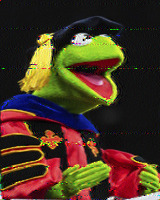

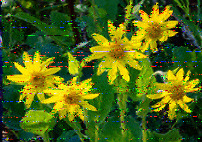
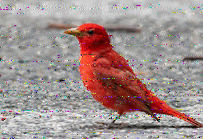


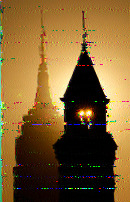
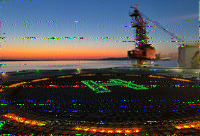
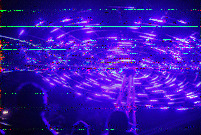
@swradiogram 9455 kHz @ 2300z broadcast was much better reception. Thanks for being one of the dreamers Kim.
Welcome to program 403 of Shortwave Radiogram.
I'm Kim Andrew Elliott in Arlington, Virginia USA.
Here is the lineup for today's program, in MFSK modes as noted:
1:42 MFSK32: Program preview (now) 2:55 MFSK32: Papua New Guinea to reintroduce shortwave* 5:52 MFSK64: VOA shutdown hits harder in Turkey* 11:01 MFSK64: This week's images* 24:53 MFSK32: Closing announcements
with image(s)
Please send reception reports to [email protected]
And visit http://swradiogram.net
We're on Bluesky now: SWRadiogram.bsky.social
And X/Twitter: @SWRadiogram
From Radio New Zealand
PNG's national broadcaster moves to reintroduce shortwave radio for nationwide coverage by 2030
24 May 2025
Papua New Guinea's National Broadcasting Corporation (NBC) is aiming to reintroduce shortwave radio to achieve the government's goal of 100 percent broadcast coverage by 2030.
This week, the state owned broadcaster hosted a workshop on the reintroduction of shortwave radio transmission, bringing together key government agencies and other stakeholders.
NBC managing director Kora Nou said the proposed reintroduction of shortwave radio can only be achieved through a collaborative effort.
He said it is important because it ensures remote communities have access to timely news and information.
NBC's executive director (engineering) Seloka Lewangu explained the importance of shortwave, while making a comparison with Frequency Modulation [FM], Shortwave, and Mediumwave transmission.
"FM is line of sight. If you see the tower, you receive the signal. If you don't see the tower, you don't receive the signal," he said.
"Medium Wave has a wider coverage compared to FM. Coverage for FM is more for cities and towns.
"When you talk about medium wave, you talk regional now.
"When you talk shortwave, you talk countrywide. That's why we are talking. If shortwave can do it for us, with all our rugged mountains and scattered islands."
This transition is timely and important for wider coverage, as it will enable broader and more reliable broadcast reach across the country's rugged terrain.
NBC also believes this shift will reduce dependency on costly hardware, making maintenance and upgrades easier while ensuring improved emergency communication and public awareness.
Shortwave Radiogram now changes to MFSK64 …
Before RSID: <<2025-05-31T23:05Z MFSK-32 @ 9455000+1500>>
This is Shortwave Radiogram in MFSK64
Please send your reception report to [email protected]
From Deutsche Welle …
US public media shutdown hits harder in Turkey
Cengiz Ozbek May 25, 2025
President Trump's shutdown of Voice of America is particularly tough on countries like Turkey, where press freedom is decreasing. It was one of the only places to get balanced coverage of Turkish-US relations, users say.
US President Donald Trump's shutdown of US media outlet Voice of America, or VOA, has had a particularly strong impact in countries like Turkey where press freedom has long been under threat.
As a result of the Trump administration's defunding of the US government-funded international news service on March 14, the organization has effectively ceased operations. News websites in all languages have not been updated for more than two months. Broadcasts on television and radio have either stopped completely or switched to music-only programming.
Before suspending service, VOA, which was often one of the rare sources of uncensored news in countries like Turkey, broadcast in 49 languages to a weekly audience estimated at 354 million people worldwide.
Banned in Turkey
Turkey, where approximately 90% of major media outlets are government-controlled, banned access to the Turkish-language website of VOA in 2022, alongside all language versions of Deutsche Welle, or DW. Since then, VOA had been trying to reach its audience in Turkey via a "mirror" website that reproduced the content of the original platform — until Trump shuttered the broadcaster completely in mid-March.
Media rights group Reporters Without Borders, or RSF, ranks Turkey 159th out of 180 countries in its 2025 World Press Freedom Index, citing ongoing repression of journalists. There are currently 17 journalists in prison in Turkey.
RSF Turkey representative Erol Onderoglu told DW that international media organizations like VOA, the BBC and DW have emerged as "constructive" role models in recent years, as the country's increasingly polarized press environment has seen a significant decline in quality and freedom.
The Turkish-language services of international broadcasters gained prominence as independent media in Turkey have diminished. Their newsrooms are based abroad but the language services also employ a small number of reporters within the country.
"VOA has also played an important role in opening the voice of Turkey's civil society movement and journalism community to the outside world and breaking the effects of isolation," Onderoglu said.
VOA Turkish was one of the most important sources for audiences in Turkey, especially regarding developments between Ankara and Washington.
"Whenever there was a development in the US that could put the Erdogan government in a difficult position — for instance, an allegation that could lead to sanctions on Turkey over Iran — the first website I would check was VOA's," one of VOA's Turkish audience told DW.
Journalists at risk
Following Trump's decision to halt federal funding to the parent agency of VOA, most of the Washington-based news service's roughly 1,300 staffers were placed on administrative leave as a first step toward termination.
A group of VOA employees affected by the March executive order has filed a lawsuit against the Trump administration, accusing the president of executive overreach. A federal appeals court in early May blocked a ruling that had ordered the Trump administration to put VOA employees back to work.
Following the appeal court's decision on World Press Freedom Day, the Trump administration has accelerated efforts to carry out the layoffs.
Nearly 600 contractors, who received termination notices on May 15, were instructed to return their press credentials, badges and other VOA property by May 30. Some affected employees are J-1 visa holders and face imminent deportation, with only 30 days to leave the US.
VOA Director Michael Abramowitz, also one of the plaintiffs in the court case, said that many of those journalists "have escaped tyranny in their home countries to tell America's story of freedom and democracy."
On Thursday, Abramowitz noted that the May 3 decision remained in effect after the appeals court rejected a request for an en banc review — a full reconsideration by all eleven judges — and warned that the Trump administration could push for further layoffs.
An unwanted 'voice' silenced
Speaking to DW, a Turkey-based VOA employee recalled the day the broadcaster abruptly shut down operations: "Our colleagues in Washington were asked to vacate their offices during working hours. Their badges were seized. They didn't even wait for the end of the day. News operations came to a sudden halt. We couldn't even complete the reports we were working on."
The journalist, who spoke on condition of anonymity, said that VOA stood out in a media environment increasingly under pressure from "an authoritarian regime."
"It was perceived as a threat by the ruling party, facing both access bans and smear campaigns by pro-government outlets targeting VOA staff. In that sense, it's likely that the government welcomed the shutdown of VOA," they said.
The VOA has also produced broadcasts critical of the US governments, they pointed out: "For example, when experts criticized the US in analyses of Turkish-American relations, such comments were never censored."
Trump's 'war' on journalism
Antoine Bernard, director of advocacy and strategic litigation at RSF, told DW that Trump's attempts to shut down VOA must be understood in the larger context of "his war on the press."
"He has targeted public media funding, launched politically motivated investigations into media he doesn't like, and banned journalists from the White House for refusing to use the exact words he wants them to use. Quite simply, he does not tolerate independent media", he said.
RSF recently warned of "an alarming deterioration in press freedom" in the US under President Trump. The organization highlighted how Trump exacerbated already difficult conditions by cutting off US financial support for state-funded broadcasters such as VOA and Radio Free Europe/Radio Liberty (RFE/RL).
Earlier this month, Trump signed yet another executive order seeking to slash funding for the US' Public Broadcasting Service, or PBS and National Public Radio, or NPR. The Trump administration also launched Federal Communications Commission investigations into major media outlets, including ABC News, CBS News, PBS and NPR.
This is Shortwave Radiogram in MFSK64
Please send your reception report to [email protected]
This week's images …
The installation "Error" during the annual Vivid Sydney festival in Australia. tinyurl.com/25yxnfel …
The sun setting from the Well-Safe Guardian oil rig in the Cromarty Firth, Invergordon, Scotland. tinyurl.com/222umt9h …
Sunrise from Jersey City, New Jersey, with the Empire State Building in New York City in the background and the Lackawanna Clock Tower in Hoboken, Jersey, in the foreground. tinyurl.com/23rlmcxq …
Former (now for hikers) and still-used railroad bridges near Conemaugh Dam near Clarksburg, Pennsylvania, May 26. tinyurl.com/2agluyna …
Former Prime Minister Justin Trudeau wears Adidas Gazelles as he waits for King Charles to deliver a speech in the Canadian Senate, Ottawa, May 27. tinyurl.com/282kvgcm …
Summer Tanager in Caddo Lake State Park, Texas. tinyurl.com/2croqctd …
Heartleaf Arnica (Arnica cordifolia) in Fields Spring State Park, Washington. tinyurl.com/25nq2698 …
Our painting of the week is "Venice, Early Morning" by S M Shahrokni. tinyurl.com/26qngu55 …
Shortwave Radiogram returns to MFSK32 …
bsfn"årRRg Before RSID: <<2025-05-31T23:25Z MFSK-64 @ 9455000+1500>>
This is Shortwave Radiogram in MFSK32 …
Transmission of Shortwave Radiogram is provided by:
WRMI, Radio Miami International, http://wrmi.net
and
WINB Shortwave, http://winb.com
Please send reception reports to [email protected]
And visit http://swradiogram.net
http://swradiogram.bsky.social
X/Twitter (for now): @SWRadiogram
I'm Kim Elliott. Please join us for the next Shortwave Radiogram.
Kermit the Frog delivered the "kermencement" address at the University of Maryland, May 23. tinyurl.com/ynrura7k …
2 notes
·
View notes
Video
youtube
Yamaha CS-80 Blade Runner sound on a DX7
The Yamaha CS-80 and Yamaha DX7 are probably polar opposites in both operation and sound. The CS-80 is an analog subtractive synthesizer, whereas the DX7 is a digital synthesizer that uses frequency modulation (FM) synthesis. The only thing they really have in common is the Yamaha brand name.
This experiment was an attempt to see if I could make the DX7 sound somewhat close to the iconic CS-80 sound famously used by Vangelis in the Blade Runner soundtrack.
The DX7 patch will soon be available for download at store.dehlimusikk.no as part of a DX7 bank/cartridge I'm currently working on.
Instrument:
Yamaha DX7
Effects:
Fulltone Tube Tape Echo
Chase Bliss Audio & Meris CXM 1978
Music: Main Titles from the Blade Runner soundtrack by Vangelis
3 notes
·
View notes
Text
The TEA5767 Module is a single-chip FM Radio IC circuit designed for low-voltage applications, making it ideal for use in embedded systems and microcontroller platforms like Arduino and other 3.3V development boards. This versatile chip includes intermediate frequency selectivity and an integrated FM demodulator. Its ease of interfacing compatibility with the I2C communication protocol makes it straightforward to connect to other development boards. With minimal additional components, it can function as a stand-alone radio receiver. The TEA5767 supports a frequency range of 88MHz to 108MHz, allowing it to tune into FM stations in India, Japan, Europe, and the United States.
2 notes
·
View notes
Text
Generation Loss Part Two: The Interview
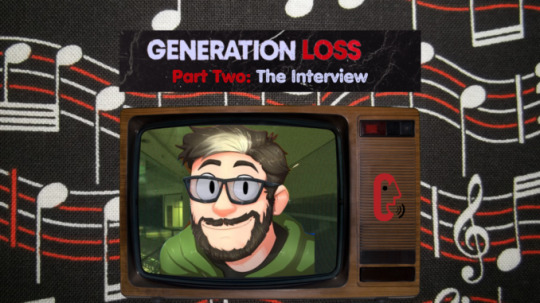
June 14, 2023
Introduction:
In this exclusive interview with Nathan Hanover, I took a deep dive into the world of music design and life as a composer. Hanover is a composer who specializes in creating music for video games, podcasts, and interactive media. His music is everywhere, highlights include The Joy of Creation, a Five Nights at Freddy’s fan game; Dialtown, a phone dating simulation game; Just Roll with It, a Dungeons and Dragons podcast; and most recently the soundtrack of Generation Loss. Hanover has an Undergraduate Degree from the University Centre of Colchester in Film Music and Soundtrack Production.
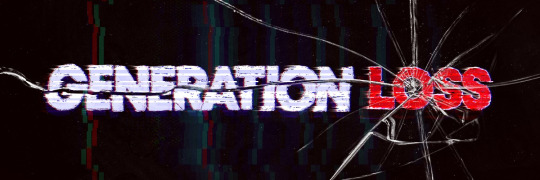
Photo of Generation Loss logo
Generation Loss:
Generation Loss is an episodic horror semi-scripted live-stream show. The show has had a remarkable impact on the lives of many in such a short time, it’s been a week since the finale.
McPherson: How would you describe the start of your involvement in Generation Loss? What was the choice to work on it like? Did you know much about it beforehand?
Hanover: I knew about the project very late compared to the rest of the Generation Loss community who have followed the project for around two plus years. After working with one of the members of the Just Roll With It team to compose the soundtrack for their horror Dungeons and Dragons podcast, Blood in the Bayou, I became aware of Generation Loss and planned to reach out to the creator for possible employment in the show.
Surprisingly however weeks later I got a private message in my Twitter inbox from said creator of Generation Loss who had streamed a video game earlier that year which I also was involved in called Dialtown: Phone Dating Sim. He had enjoyed the music in this game a lot, and once my work finished on Blood in the Bayou, its creator suggested me to the Generation Loss creator, complimenting my music, my turnaround time, etc. So, while I planned to contact them, they contacted me. {Ranboo, the Generation Loss creator, uses he/they pronouns.}
McPherson: G.L. has such an already iconic story and aesthetic. What was composing music for it like? Did you find it limiting?
Hanover: As you noted above, I have a Bachelors’s with an honors degree in Film Music & Soundtrack Production however mostly specialize in Video Game music, this project was exciting for me as this was technically the first time I had put my degree to the test, this wasn’t a game. This project was a mix of live theatrical performances and pre-recorded scenes, there weren’t any concept art, cutscenes, or shots I could look upon to brainstorm my ideas as 90% of the show was live, other than looking at the set of the Cabin, the already released marketing, and the script, I had to conjure ideas I thought would fit into the scenes I had built in my imagination.
With the marketing already released and trailers of the show on the internet, stock music had been used of an 80s FM (Frequency Modulation Synthesis) Synthesizer repeating a dissonant stabbing chord pattern, the creator of Generation Loss enjoyed this sound, and I used this as the basis of my soundtrack, taking this idea and creating my own. Generation Loss’s theme includes two main motifs, the stabbing chord pattern, and an arpeggiated sequence of this same chord. The chord I decided to use was an A Minor with a sharp 7th (the G# note in this context) creating an AmMaj7 (A Minor Major 7 chord), in the correct context this dissonant chord can become bittersweet, tugging at the heart, however putting the 7th at the bottom of the chord creates a Minor 2nd clash between the G# and the A, always giving that sense of unease and raw dissonance. This chord progression and the arpeggio outlining the chord show up all over the soundtrack, even hidden in other character themes.
I played around with modulation effects, granular synthesis, and stuttering glitch effects to make the soundtrack sound as unique as it does, this was quite fun for me as most of my other work has been long-drawn-out ambient pieces, Jazz or Swing, or even Orchestral. So to work in this retro 80s aesthetic, but to corrupt it in such a way where it was listenable, but unusual as if the act of Generation Loss had taken effect on the soundtrack was enjoyable to me and opened the door to truly unique ideas.
McPherson: G.L. has some of the hardest-hitting emotions in horror. Your music is a significant part of that impact. How do you do it – how do you create such emotional music?
Hanover: For me, to make emotional music work I have to determine what notes I’m going to use, what scale to write in, and what directions I want to take the piece, but the key factor people may not think of is not what’s written in the music, but what’s written around the music or what the music is actually being paired to. For example, in episode 1 of Generation Loss, there is a mixture of unease, ambiance, and comedic music, when the main character goes into the basement the music is a long drawn-out ambiance, unsettling effects, and detuned piano, but the scene had been juxtaposed by a comedic cooking segment only moments ago. The tonal whiplash in the music makes the scene hit hard, one moment they are cooking slime for a slime demon, and the next they are exploring a dusty basement with literal skeletons. Episodes 2 and 3 were similar but the style had changed, the ambiance had been removed in favor of SAW-esque pieces, driving drums, electronic stings, etc. but still included elements of comedy, “The Lasor Room” for example inspired by old 70s spy films, juxtaposed by the driving rhythm that scored the scene moments before where the characters begged for their lives on a carousel.
McPherson: What, if any, were some of your stresses or worries while making the soundtrack? In contrast, what was the most enjoyable part of the process?
Hanover: My biggest worry was the deadline, while I started the project in January 2023, I had only created the main theme and a random draft of an idea that eventually became the opening to “Live or Die”, my work truly began at the end of March and had around 2 months to create the soundtrack, due to how tight the deadline was I was writing music days before the first episodes premier and is why the soundtrack has a delayed release as online stores request music to be submitted 3-4 weeks before release. I found feedback quite hard as usually I work 1-to-1 with the employer to show off drafts and brainstorm ideas, track titles, etc. but this project was different due to how busy everyone was, I’d essentially write several pieces a week, get feedback, and then create edits to be greenlit the following week and repeat. No one had time to sit down and brainstorm so a lot of the feedback was in bursts but due to a timezone difference, this meant I’d get feedback very late into the day for me to act upon the following morning.
In contrast, I feel my favorite part of the process was to see how excited the creators and actors got about my music which encouraged me to create better and better pieces. One of the actors even now talks about my music and how passionate he is about my soundtrack which is nice to see. Another thing I enjoyed was hiding stuff IN the soundtrack itself, secret codes, visual art IN the music, and hiding motifs in other pieces to show the connection between tracks/themes, the Snowfall Jingle motif crops up in a few pieces, but the Generation Loss motif shows up even more.
McPherson: Did the soundtrack go through any major changes before it was finalized? What song was made first? Which was last? How long does a song normally take you to make?
Hanover: I don’t believe the soundtrack went through any major changes as once I had the style of the project down, I could work within those boundaries however tracks had little changes along the way, even a few cut tracks of failed ideas. The first track I wrote was in January 2023 which was the Generation Loss theme which went through 2 iterations before landing on the one used in the show. The last track was the Button cutscene which was also the longest to create due to severe technical difficulties with the DAW (Digital Audio Workstation) I use which doesn’t score to video well. Most tracks can take anywhere from a day to create to a week, the “Achievement Unlocked!” Jingle naturally only took me a few hours to create and finish as it was only 3 seconds long and is an altered version of the Generation Loss motif, however, “The Button” took me around a week to create and finish to the point I was working on it the day before episode 1’s premier.
McPherson: Do you have any behind-the-scenes stories about Generation Loss?
Hanover: I sadly don’t other than the coincidence of myself wanting to reach out to the Generation Loss creator only for him to actually reach out to me weeks later following his previous encounter with Dialtown: Phone Dating Sim and the suggestions from his friend who hired me for Blood in the Bayou.

Photo of Just Roll With It logo.
Previous Work:
Prior to Generation Loss Hanover has made music for many video games and series. One, my favorite Dungeon and Dragons podcast, Just Roll With It. Just Roll With It features many online personalities as they play custom D&D campaigns together. Another is Dialtown, a phone dating videogame.
McPherson: What has working on JRWI’s sound been like? How have the different campaigns influenced your process? Do you have a favorite?
Hanover: Working with Just Roll With It was by pure luck if I’m honest, the creator of Blood in the Bayou made a Tweet searching for a composer to work on his project, and one of my friends suggested the link to me, I’m quite pessimistic so I replied to the tweet not expecting any response, but my track “Blood Sugar” had sealed the deal for him and I was hired! Blood in the Bayou was exciting to work on and my first foray into Podcast music. Its deadline was harsher than Generation Loss which made me pivot the soundtrack halfway through, instead of writing music to the episodes themselves to creating looping music like I would a Video Game for the editor to add in and swap on their choosing. Once Blood in the Bayou was complete, the main JRWI member approached me to work on their main campaign, Riptide, a sea shanty pirate podcast with over 100 episodes! Riptide took me a while to get into the swing of the style I and the JRWI team wanted, having just came from BitB my brain had to readjust the musical style to fit this pirate aesthetic, initially there was a lot of trial and error when creating its theme and the mood but luckily since the team uses Video Game music as their background music, I had a plethora of examples to build upon. I feel I enjoy Riptide the most out of the 2 as while it’s pirate music, it has its own universe where genres exist together so for one track I can include fully orchestral, and then write a Punk Rock piece next which despite being so different, the variety of the world and it’s sound allows it to gel well.
McPherson: Dialtown is such a unique game, and your music plays a great part in that. How did you make such a massive soundtrack?
Hanover: I work quite quickly when I create music, I know FL Studio like the back of my hand which allows me to be extremely efficient, Dialtown was also in development for almost 3 years which gave me more than enough time to research, plan and write its music. Dialtown’s soundtrack was fun to work on as like Riptide, was quite diverse in its sonic style, mixing Jazz and Swing, Orchestral, and some ambiance together throughout, Dialtown is also a visually unique game which allowed the music I created to be unorthodox in its creation. Unusual chord progressions to uncommon tonal modulations and creative ways to use the most unusual instruments in its setting, from Camera clicks, snaps, and hits as the percussive basis of “Oliver, aspiring filmmaker, qualified goblin” imitating drums, to the vibrato of the Stylophone’s in “Karen, so, so dunn”.
McPherson: How has the experience of working on so many different projects been for you? Do you have a favorite? Which was the most challenging?
Hanover: A lot of my work has been building experience for my future work, despite starting in 2015, I feel the last 5 years or so have been building up to the start of my career, and the initial 5 years were portfolio-building, I keep my early music up as an example to show off my blunders, from weird mixing, terrible melodies to ideas that worked in theory but failed in practice, but I also keep these early blunders public to show off how my style as grown. I get complimented on my leitmotif skills and how to tie a motif together to be recognizable and fun to listen to, but if you look back at my early 2015-2017 work, you can see that those skills were in their infancy.
I don’t feel I have a favorite project as I see my work from the creators’ point of view, not the listeners so I can hear all the imperfections or things I feel I could have done better on, but every so often I’ll go back to a track of mine to listen to, to re-experience it, but there’s always a threshold that is hit once I stop listening or thinking of my previous pieces in favor of my newer upcoming music.
McPherson: Is there anything you’d change about your work?
Hanover: I like this question as the simple answer would be “No”, but for the long answer, I feel anyone who creates art is a bit of a perfectionist who won’t let go of a particular piece until it’s perfect and I feel like that’s the same for me, I don’t release a piece until I feel it’s perfect At that time. The catch musically is my knowledge is ever expanding, I don’t think you ever stop learning as it’s such a massive topic to the point even individual genres have their own information and knowledge on what makes that individual genre work. There’s also equipment, I have far better equipment, knowledge, and technology than I had 5 years ago, a track I believed was perfect 5 years ago won’t be perfect now and as such, every so often when the mood strikes me, I’ll revisit a track to rearrange and update. I was going to do this with Dialtown’s soundtrack but knew it would be far too costly and time-consuming, but I have done it with my standalone tracks such as “The Castle (2016)” and “Return to the Castle (2018)”, “Autumn (2016) and “From Summer to Winter (2021)”.


Photos of Nathan’s cats Milly and Myrtle.
Personal Life and Thoughts:
Wanting to know more about Nathan outside of his work? In this section we talked advice and his personal life!
McPherson: Do you have advice for other musicians? Do you have any advice for college students?
Hanover: It’ll sound pessimistic, but I feel the best advice I could give is the saying “Don’t put all your eggs into one basket” I’m unsure if this is a cultural saying but essentially don’t funnel all your time, effort and money into one thing. When I first started, I was embarrassed at the thought of music NOT being my primary job and put all my time, effort, and money into it and then realized how BIG the music industry is and how saturated it is more so from the recent Pandemic. Due to this it hindered my developments greatly, couldn’t pay rent, couldn’t fund myself further, etc. because no one was hiring and there were literally thousands of composers out there all wanting a piece of the pie. Naturally feeling deflated by this I’d look on the internet for interviews of bigger composers and what their advice was which always boiled down to “If you continue and do your best you’ll make it” but I feel this is survivors bias, having seen just how BIG the industry is, I feel I’m not even scratching the surface yet.
But I soon learned a lot of their advice came down to one (or more) of three things, Luck, connections, and being in the right place at the right time, one great composer I’ve always been inspired by recounts how he would submit his portfolio to X company for months with radio silence, until he knew a friend who worked at the company who was willing to show his portfolio to executives, eventually getting hired (Connections). Another worked in a music store testing music software, and one day a pair of company executives entered and were surprised to see the music coming from the music software was from the store clerk and offered him the job at the company eventually getting hired (Luck + Right place at the right time). I’m nowhere as big as the previous examples but to use my own example of how I came to work on Generation Loss really starts in 2016 when I worked on two Video Games, Porkchop’s Adventure and Porkchop’s Horror Show, that creator knew the creator of Dialtown: Phone Dating Sim, which got streamed by the creator of Generation Loss which allowed me to be hired thanks to the luck of my hiring for Blood in the Bayou, and thanks to the right connections, allowing me to work on Generation Loss.
I started my portfolio in college, and I feel from my experience building your portfolio as early as possible and getting as many connections as you can from networking as possible is the way to go, My career started by sending a Direct Message to someone on DeviantArt, the creator for a Five Nights at Freddy’s fangame called The Joy of Creation when I was 15, having no idea it would get as popular as it has become to be picked up by the creator of Five Nights at Freddy’s himself soon allowing me to move away from fangames to original IPs. Don’t be embarrassed or afraid to work a second job, and do not make your music career the primary career unless you happen to be born with a lot of money and open opportunities already, it’s oversaturated and pays poorly, work a primary job to help fund your music career, and eventually with luck it may tip the scales where your music career becomes your primary career. This also applies to session musicians, I used to start by playing gigs in bars before jumping to music composition, and even now work Part Time as a composer, naturally, I won’t disclose my primary job but it helps pay the bills, keeping the lights on, while my music income pays for its own bills, and I hope over time I can buy a separate place to have as my own studio but I hindered myself from the start by putting all my eggs into one basket believing if I just funneled as much of my time, effort and money into it, it would simply work. I would class myself as an indie composer and I hope my work can inspire people, but I’m not at the stage where it’s 100% sustainable and it may not be for another 5 years, there still may be a point where I simply stop creating, I’d like to hope not, but it’s never a 0% chance.
McPherson: Are you enjoying your career?
Hanover: I’d say so, but I can be pessimistic so I don’t have the brightest of outlooks, but that is mainly to do with my Anxiety and Depression which I suffer from, music can sometimes be an escape for me, and something I deeply enjoy thanks to my Autism.
McPherson: Generation Loss has recently caused a lot of new people to become fans of your work. How has that affected you?
Hanover: It’s been exciting if I’m honest, I’ve always had a small following over the last 5-7 years or so, but this has been the biggest reaction I’ve had and I hope it continues after the release of the Generation Loss soundtrack. People joke about me simply appearing in comments and scaring them with my presence (which I find extremely funny it’s now become a little internet meme) I am just incredibly grateful for the support and attention, as you can probably tell from the previous 2 questions, under the online presence I’m not the brightest nor happiest of the bunch so it’s nice to see people genuinely enjoying the music enough to pay and help fund me as a creator. I hope it doesn’t sound greedy but it all helps go towards my progress and sustainability, I know money can be a taboo topic in the industry, everyone has to have some heartfelt reason as to why they do what they do, and I guess I do to…but money is also nice. It’s not talked about but it’s fundamental, if all my music income suddenly stopped, other than the passion, nothing else would fuel my creations and I don’t think the taxman or landlord would allow “passion” as a payment option, a lot of passion was used in those first 5 years building my portfolio and earning little to nothing in order to try and get myself off the ground.
McPherson: What would you like the readers to know about you?
Hanover: One of my favorite colors is pink, and I have two cats, Milly (10), Myrtle (4) which you can see me post on my Twitter every so often, I firmly believe Trans rights are human rights! Happy Pride Month!
You can support Nathan Hanover’s music at:
Bandcamp: https://nhsynthonicorchestra.bandcamp.com/
Kofi: https://ko-fi.com/nhsynthonicorchestra
Website: https://nathanhanover.com/
LeAnne McPherson
1 note
·
View note
Text

I've been seeing some people being confused in the notes so,,,
While modern radios have way more elements than this, if the signal is strong enough that's technically all you need. ... okay and some wire i suppose.
Because radio waves are electromagnetic and they oscillate, they create a small current in a conductor (that's induction!). The diode together with a person holding it serves to "decode" the radio signal. The diode rectifies it and the person, acting as an antenna, both picks up the signal and acts as a crude low pass filter. That's all you need to decode an AM (amplitude modulated) signal. With the magnet and tin can, you can make a speaker to then listen to that decoded signal. Mind you that this would be an untuned radio, picking up many frequencies at the same time. You'd hear them overlap.
I intentionally said AM and not FM because the latter is not that easy to decode and would need additional materials.
In this post I'm slightly exaggerating how easy it'd be to listen to a signal like that with some quality but technically with a strong signal it's absolutely possible and even if you do add some more elements to make the signal clear and specific you still wouldn't need an additional power source. The only thing an AM radio typically needs a power source for is a sound amplifier, but if you use high impedance (2k Ohm) headphones you don't need that. The catch is that these can be hard to find these days, but you can still make them out of e.g. piezoelectric buzzers or indeed a magnet and a tin can.
AM radio is like literal magic. There is music all around us that we can't hear, and to hear it you just have to tap a crystal (diode) to the earth and listen to it with another magic rock (magnet) and a tin can. You dont even need electricity to make it work because this music around us is literally all the power you need. Oh and at night when the sun has set, the light of the day gets replaced by MORE music because the signals can travel further at night. This is magic. If you even care.
30K notes
·
View notes
Text
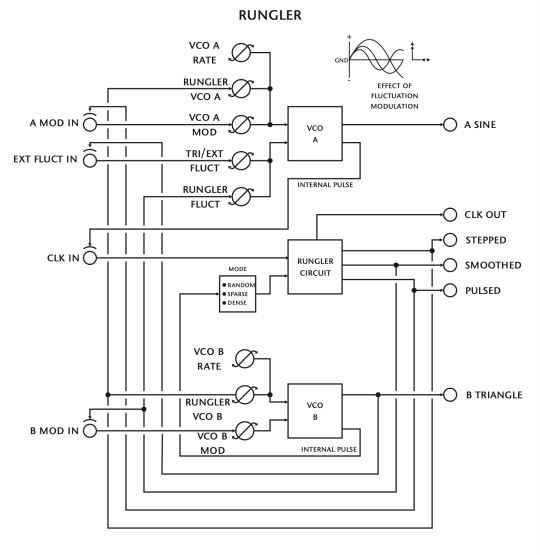
The Rungler
You can get the schematics PDF here.
The purpose of the rungler is to create short stepped patterns of variable length and speed. One could categorize the circuit somewhere halfway between a plain S&H and a shiftregister-based pseudorandom generator.
It needs two frequency sources to work and basically creates a complex interference pattern that can be fed back into the frequency parameters of the driving oscillators to create an unlimited amount of havoc.
The rungler is basically a CMOS shift register clocked by one oscillator and receiving its data input from the other oscillator. The output bits of the shiftregister are used as a binary code ‘to do something with’. E.g. in the Benjolin the last 3 stages of the shift register for a 3 bit code that is fed into a 3 bit DA converter. This DA eight level output voltage is fed back to the oscillator frequency control inputs. The output of the DA is the ‘rungler CV signal’.
To describe the rungler waveform in similar terms as like a sine wave or pulse wave I call it a ‘stepped havoc wave’.
When the rungler signal is fed back to the frequency parameters of the oscillators it will change the triangle waveforms and pulse widths of the oscillator outputs, making other types of havoc waves, like a ‘pulsed havoc wave’ and a ‘sloped havoc wave’. Note that it is these properties of stepped, sloped and pulsed that are of interest in the waves.
The rungler will try to find a balanced state. In this way it behaves according to principle from Chaos Theory. There seems to be an unlimited amount of possible balanced states and when a balanced state is just slightly disturbed it can be noted that it takes a little time to find the next balanced state, with noticeable bifurcations, etc. Note that a new balanced state is defined by the exact position of the control knobs plus the previous state it was in.
These two wide range oscillators (not compliant to the 1V/Oct standard response) can cross-modulate and/or can be modulated by external signals.
Oscillator A produces a Sine wave and provides clocking for the shift register. The first oscillator is similar to the first oscillator of the LF-VCO. It has fluct modulation with rate controlled by Osc B Rate. As Osc B can go in audio range, fluct can cause sort of soft sync effect. Oscillator B produces a Triangle wave and provides the material for the shift register. A special Fluctuation modulation signal derived from oscillator B provides combined AM and FM to oscillator A and can be replaced by an external signal. Oscillators A & B are available as direct outputs.
The output of the shift register can be applied to oscillator A in Stepped, Smoothed and Pulsed modes simultaneously. These Stepped, Smoothed and Pulsed signals are also available as direct outputs.
Clock In & Out makes syncing to other modules possible.
The Rungler has different operational modes that can be selected with a switch :
Random mode works as digital noise clock. In sparse mode, it only changes now & then. In dense mode, it’s always changing. In random mode, if the second oscillator is tuned higher than the first oscillator, we get sort of noise pattern but that’s looping quicker than the normal digital noise. If you lower VCO B Rate, you go to noise & every time you increase it, it has different kind of sound.
In sparse mode, the same thing happens because if B is lower we have constant change and in when it’s higher it holds. VCO A Rate can be very slow, can have sort of stepped signal. When modulating pitch, you have a short sequence of 32 notes.
Stepped signal can be feed back into the freq of the first oscillator. Smoothed and pulsed are derived from stepped signal. Smoothed is sort of filtered stepped signal. Pulsed has 2 states: On and Off. Kind of morse like effect. Rungler VCO A is stepped. VCO A Mod is pulsed. Rungler Fluct is smoothed. By turning the 3 knobs, we can create all different sorts of bands in spectrum.
The rungler can be clocked with external signal. e.g. Full Out in Clk In and Stepped in Pitch Mod. By adjusting HRM and Pitch Mod, we create specific timbres. In this output VCO A Rate does not affect the sound. In Smoothed Out, VCO A Rate set the speed of modulation.
With all Rungler modulation off, you have two wide range oscillators (A and B) with A offering sine and B offering triangle waveform. They happily function as both an audio range VCO or as a LFO. Also, oscillator B modulates oscillator A.
A voltage sequence generator, somewhere between a simple S&H and a semi-random pattern. The amount of randomness of the pattern may be controlled by a switch, oscillator A controls the clock/pattern speed and oscillator B offers the waveform to be ‘sampled’ into the pattern. With a whole slew of (cross) modulation inputs, the result can vary from a ‘nearly-stable’ sequence to a completely random-sounding CV. Various sub-outputs are available, useful as note sources, modulation sources or even clock sources. In the latter case, the output can generate interesting rhythmic variations perfectly in sync with the controlling clock signal.
A semi-random noise generator. Depending on the settings, it results in ‘almost’ white noise or -on the other end of the spectrum- noise patterns similar to the early video game chips. This can be used as a very valuable source of interesting drum sounds! It creates interference patterns between the 2 oscillators but time delay is present in this patterns (very short time delay 1Bit).
This module is a unique source of audio and modulation signals, that produces unusual, unpredictable, organic, chaotic or subtly shifting noise, tones, melodic and rhythmic patterns. A microcosmic source of infinitely varying automatic electronic music.
Addendum:
The Rungler is 2 VCOs that are crossmodulated with some clever delay circuitry so that you get infinately changeing timbres. One vco can sync to the other vco or external signals. But I don’t fully get it either. As soon as I get the module (couple of weeks) I will come back on that.
Some things to get you started:
Mix both the A sine and B triangle outputs so that you can hear them. You can use the matrix or dual fader for that.
Set the all the knobs to 0 and the switch to sparce. This is the “default” setting.
Set vco A rate to 11 o’clock and vco B rate at 3 o’clock.
Now turn up rungler vco B, you should here a 32 note melody. The speed of the melody is determined by the vco A rate.
Turn up the vco B mod, you now hear the pitch glide between notes.
Go back to the default setting.
Now set vco A to 3 o’clock and vco B to 11 o’clock.
Turn up the rungler vco A knob, you should here a nice flutering sound at lower settings and a random melody at higher settings.
Flick the switch and hear how it changes the sound.
One at the time turn up the other knobs that influence vco A and get a feel for what they do.
Go back to default and set the vco B rate to max and vco A rate to 4 o’clock. Then turn all the other knobs. At every other setting of the knobs you should get different timbre’s as the rungler settles into a (most of the time) stable state.
When vco B rate is lower than vco A, the rungler is (most of the time) unstable and you hear noise with various spectral content.
I added “most of the time” because sometimes the rungler switches into a stable or unstable setting. If you have the switch to random it always stays in an unstable setting, it can sometimes lock into a stable setting for a short time but not for long.
Now try the different outputs and see how they sound. Different setting:
Plug a pulse lfo (B pulse of the triple lf-vco) into the clock input of the rungler. And patch up a vco into a filter so you hear the filter output.
Modulate the filter cutoff with the stepped output of the rungler. Again if rate B is above rate A you get a 32 step pattern.
Now try the smoothed output to modulate the filter cutoff and play with the vco A rate knob. The smoothed output is a low passed version of the stepped output with the cutoff determined by the vco A rate knob.
Experiment! ;-)
One more rungler tip :
You can clock it at audio rates with the HRM for example. If you put it into a stable mode, it outputs an endless amount of timbres a few octaves below the pitch of the clock oscillator. This turns the rungler into a “wavetable” oscillator.
EOF
0 notes
Text
Introduction to the basics of Sound Design
Sound design is the art of creating, modifying and manipulating sounds to adapt them to a specific context: music, film, video games, theater, advertising, etc. In music production, sound design is at the heart of modern musical creation, whether it's inventing new textures, creating immersive atmospheres or sculpting customized virtual instruments.
What is sound design?
Sound design encompasses several practices:
Creating sounds from scratch (often using synthesizers).
Manipulation of existing sounds (sound effects, samples, recordings).
Processing sound to give it a particular character (effects, modulation, spatialization).
It's as much a technical skill as a sensory art.
2. Basic tools
To get you started, here are the main tools used in sound design:
Synthesizer
A synthesizer is used to generate sounds from electronic waves. There are several types of synthesis:
Subtractive (filtering out harmonics from a rich sound)
Additive (addition of single waves)
FM (frequency modulation)
Granular, wavetable, etc.
Sampler
The sampler reads and manipulates sound extracts (samples). They can be played at different pitches, sliced, looped or processed.
Audio effects
Effects are essential for shaping a sound:
EQ (equalization): adjust frequencies
Compression: manage dynamics
Reverb & Delay: create a sound space
Distortion, chorus, flanger, phaser, etc.
Digital Audio Workstation (DAW)
This is the main software for composing, editing and mixing (Ableton Live, FL Studio, Logic Pro, Reaper, etc.). Personally, I use FL Studio, but it won't make much difference.
3. Technical basics
Frequencies
Every sound is made up of a frequency spectrum. The sound designer needs to know where bass, midrange and treble lie, and how to balance them.
ADSR envelope
Every synthesizer (and sometimes effect) uses an envelope:
Attack: sound arrival time
Decay: decay after peak
Sustain: level maintained
Release: time after release
Modulation
Modulations are used to create movement in sound: LFOs, envelopes, automation...
4. Creative approaches
Sound design is also an artistic exploration:
Experiment with textures (organic vs. digital sounds)
Capture sounds around you (field recording)
Recycle unexpected samples (white noise, human voices, everyday objects)
Create original presets on your synthesizers
Sound design objectives by area
Area Sound design objective
Cinema Realism or emotional impact (FX, ambiences)
Video games Reactivity and immersion (dynamic sounds, 3D)
Music Sound identity, unique textures, memorable hooks
Apps / UI Clarity and intuitiveness (audio feedback)
Sound design is a fascinating field, at the crossroads of art and science. To get off to a good start, we recommend :
Practice sound reproduction
Analyze professional productions
Explore different types of synthesis
Develop a critical ear
Remember: listening is your main tool. The more you practice, the more you refine your perception of sound.
A few videos to help you get started with sound design:
-Sound Design Complete Course :
youtube
- Playlist to learn Sound Design on Serum 2
youtube
- Playlist to learn Sound Design on Vital
youtube
#beats#beatmaking#artist#producer#beatmaker#music producer#musicprodution#music project#music problems#music promotion#Youtube
1 note
·
View note
Text
KT1025A Dual-Mode Bluetooth Audio Chip Layout Description and Design Precautions
1.Brief Overview
1. First, please refer to the provided BT201 test DEMO module as the standard.
2. If using the chip independently without testing the BT201 module and directly proceeding to layout, background noise is highly likely if experience is limited. Therefore, always compare with the manufacturer’s test board first.
3. The BT201 solution does not include FM functionality. Please note this. The FM circuit should be left floating without hesitation.
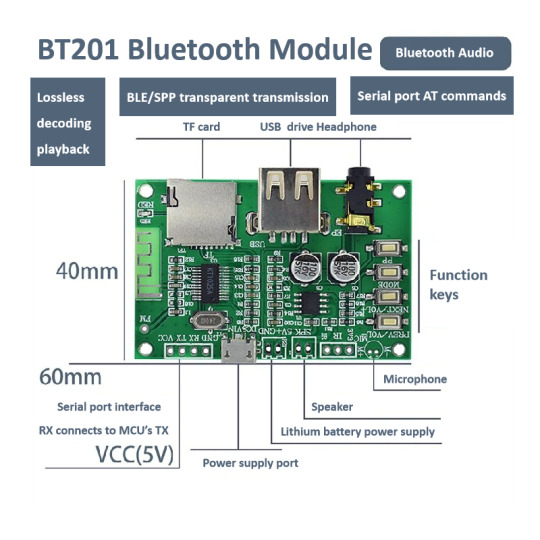
2.Precautions
1. Background noise or interference is common in Bluetooth audio products. Do not be careless during layout.
2. If you have not worked on audio products before, study online resources thoroughly. Assuming things casually will naturally lead to noise issues.
3. The core principle is to separate analog ground and digital ground. If unclear, consult an experienced engineer.
4. Ensure a clean power supply. Use an LDO whenever possible instead of a DC-DC converter.
5. Bluetooth operates at high-frequency RF and radiates energy, so some background noise is inevitable but can be minimized. With good design, noise is imperceptible to the human ear, though it may be measurable with instruments.
3.Antenna Description
1. For antenna and component packaging, directly refer to the PCB files of the DEMO module, available in the document library.
2. The Bluetooth antenna has no special requirements. Follow the provided package and reference instructions.
3. The Bluetooth antenna does not require impedance matching, and standard copper thickness is sufficient. Don't over complicate it—Bluetooth has a low entry barrier.
4.Power Supply Description
(1)The BT201 test board has minimal background noise, barely noticeable to the human ear.
(2)You can try powering it with a phone charger, which should not produce significant noise.
(3)Battery power is ideal as it provides pure DC and is very clean. However, consider the battery's load capacity.
(4)USB output from a desktop computer may produce significant ripple, leading to background noise. Avoid using it.
(5)If the board includes a DC-DC converter, it may cause noise. The optimal power supply is an LDO, such as a 7805.
(6)The BT201 module can drive a maximum speaker of 4 ohms, 3W with a 5V supply.
(7)When driving speakers, ensure sufficient current with a stable power supply. Insufficient current can cause speaker distortion, buzzing, etc.
(8)If possible, purchase various amplifier modules online for comparison testing. We sell Bluetooth chips, but amplifier-related noise, distortion, or other issues are extended topics that are complex and cannot be explained briefly.
5.How to check if the board has background noise?
(1)Use a clean power supply, ideally a battery, and disconnect all front-end power circuits.
(2)Connect the chip's headphone output and listen for noise. If none, check the rear-stage amplifier circuit.
(3)If USB playback has no noise but Bluetooth does, this does not necessarily indicate a problem.
(4)Use headphones to check for noise. If none, the issue lies in the amplifier section, so inspect it.
(5)If noise is present with headphones, disconnect the rear-stage amplifier and inspect the Bluetooth chip's peripheral circuits. Determine whether noise occurs during Bluetooth or MP3 playback. For Bluetooth noise, check if capacitors around the main controller are properly soldered and if they are too close to the Bluetooth module. Refer to other instructions for troubleshooting.
(6)For noise testing, avoid using a computer's USB or a charger's USB. Use a clean power supply with strong load capacity, ideally tested at 5V, not 3.7V.
6.Methods to Reduce Bluetooth Background Noise
(1)Keep the Bluetooth antenna and Bluetooth module as far as possible from analog circuits.
(2)The chip's analog ground must be connected to the power ground at the input.
(3)Check capacitors around the chip for issues such as short circuits or poor soldering.
(4)Add multiple vias to the GND of the Bluetooth section.
7.Selection and index requirements of crystal oscillators
(1)Bluetooth has high frequency offset requirements, so the crystal oscillator's quality is critical for performance. During selection, ensure consistency and stability, with a frequency deviation of ≤±10ppm and a recommended load capacitance (CL) of 12pF.
Note: Crystal-to-ground capacitors C102 = C103 = 2*CL – (4pF~6pF), where CL is the crystal's load capacitance.
(2)For designs with no size constraints, use the crystal specified in our DEMO, which is cost-effective and high-performing.
(3)For size-constrained designs, use a 24M-3225 crystal, which is slightly more expensive but performs well.
Recommendation: Use our provided crystal, which is more cost-effective and quality-assured compared to random purchases.
8.Simple PCB Layout Precautions
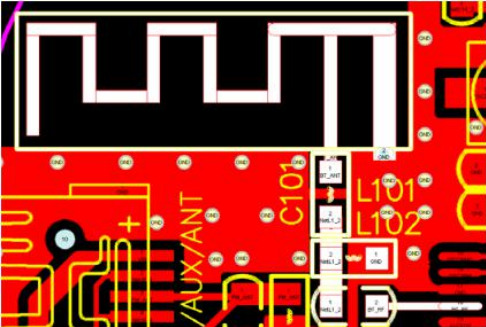
(1)The input voltage to LDO_IN (Pin 18 of the chip) must not exceed +5.5V.
(2)The chip must strictly separate digital GND and analog AGND (refer to the provided BT201 PCB).
(3)During PCB routing, digital GND and analog AGND must be routed separately and connected only at the battery input. If the design includes a pre-amplifier ground, connect AGND to it.
(4)All decoupling capacitors on the main controller must be placed as close as possible to the chip pins, with short ground return paths.
(5)Prioritize the placement of the Bluetooth antenna. The RF antenna must be near the board edge (or in an open area if structural constraints apply). The antenna matching circuit must be close to the RF pin, with short routing. The antenna's ground plane should follow the yellow outline in the antenna package, and the space on both sides should be as wide as possible, as shown in the diagram avove.
(6)The 24M crystal must be placed close to the chip's clock pins (BTOSCO and BTOSCI). Its routing must be shielded with a ground plane, kept away from interference sources, and not routed parallel to other data lines.
(7)Audio signal lines (DACL, DACR, AUXL, AUXR, MIC, etc.) must be routed away from digital signals (LCD/LED signals, USB, SD, etc.).
#bluetooth#audiochip#bluetoothchip#voicechip#ble#spp#electronic#coding#embeddeddevelopment#devlog#aiot
0 notes
Text
Shortwave Radiogram 403
9356 kHz 2330z reception was bad so I can only bring you text tonight!
@swradiogram
Welcome to program 403 of Shortwave Radiogram.
I'm Kim Andrew Elliott in Arlington, Virginia USA.
Here is the lineup for today's program, in MFSK modes as noted:
1:42 MFSK32: Program preview (now) 2:55 MFSK32: Papua New Guinea to reintroduce shortwave* 5:52 MFSK64: VOA shutdown hits harder in Turkey* 11:01 MFSK64: This week's images* 24:53 MFSK32: Closing announcements
with image(s)
Please send reception reports to [email protected]
And visit http://swradiogram.net
We're on Bluesky now: SWRadiogram.bsky.social
And X/Twitter: @SWRadiogram
tnone0j b . . . . .
From Radio New Zealand
PNG's national broadcaster moves to reintroduce shortwave radio for nationwide coverage by 2030
24 May 2025
Papua New Guinea's National Broadcasting Corporation (NBC) is aiming to reintrivshejtrave radio to achieve the government's goal of 100 percent broadcast coverage by 2030.
This week, the state owned broadcaster hosted a workshop on the reintroduction of shortwave radio transmission, bringing together key government agencies and other stakeholders.
NBC managing director Kora Nou said the proposed reintroduction of shortwave radio can only be achieved through a collaborative effort.
He said it is important because it ensures remote communities have access to timely news and information.
NBC's executive director (engineering) Seloka Lewangu explained the importance of shortwave, while making a comparison with Frequency Modulation [FM], Shortwave, and Mediumwave transmission.
"FM is line of sight. If you see the tower, you receive the signal. If you don't see the tower, you don't receive the signal," he said.
"Medium Wave has a wider coverage compared to FM. Coverage for FM is more for cities and towns.
"When you talk about medium wave, you talk regional now.
"When you talk shortwave, you talk countrywide. That's why we are talking. If shortwave can do it for us, with all our rugged mountains and scattered islands."
This transition is timely and important for wider coverage, as it will enable broader and more reliable broadcast reach across the country's rugged terrain.
NBC also believes this shift will reduce dependency on costly hardware, making maintenance and upgrades easier while ensuring improved emergency communication and public awareness.
https:¹Miaohetfiom/2yga7bv3
tRWenftvb&
Shortwave Radiogram now changes to MFSK64 …
ist| e o
Rf0PCzsi Before RSID: <<2025-05-29T23:35Z MFSK-32 @ 9265000+1500>>
uotnnec R r0
This is Shortwave Radiogram in MFSK64
Please send your reception report to [email protected]
tR tec ud wt . . . . .
From Deutsche Welle …
US public media shutdown hits harder in Turkey iug /¸Ûðzbek May 25, 2025
President Trump's shutdown of Voice eO KP p tx is particularly tough on countries like Turkey, where press freedom is dtc e;r. It was one of the only places to goáanced coverage of Turkish-US relations, users say.
US President Donald Trump's shutdown of US media outlet Voice o@d>Btolaror VOA, has had a particularly strong impact in countries like Turkey where press freedom has long been under threat.
As a result of the Trum yKitration's defunding of the US government-funded internonal news service on March 14, the organization has effec7kee erations. News websites in all languages have not been updated for more than two months. Broadcasts on television and radio have either stopped completely or switched to music-only programming.
B feeepending service, VOA, which was often one of the rare soqoces nqyewkyored news in countries like Turkey, broadcast in 49 languages to a weekly audience estimated at 354 million people worldwide.
Banned in 5ÏoivutFoo6¼ eoµhere approximately 90% of major media outlets are government-controlled, banned access to the Turkish-language website of VOA in 2022, alongside Utanguage versions of Deutsche Welle, or DW. Since then, R eâ6j2n trying to reach its :H cen Turkey via a "mirror" webacte that f tb% uced the content of the original plsioorott1€” until Trump shuttered the broadcaster completely in mid-March.
Media rights group Reporters Without Borders, or RSF, ros Turkey 159th out of 180 countries in it025 World Press Freedom Index, citing ongoing repression of journalists. There are currently 17 jouts in prôon ¯ TurkXöoøYims0 ËT representative Ernm1k » oglu toåyl±ioternatio nal m §b0nizations like VOA, the BBC and DW have emerged as "constructive" role models in recent years, as the country's increasi¿i tged press environment has seen a significant decline in qualitEèCºRoolÔ
The Turkish-language services of international broadcasters gained prominence as independent media in Turkey have diminished. Their newsrooms are basei ¬ road but the language services also employ a small number of reporters within the country.
"VOA has also played an important role in opening the voice of Turkey's civil society movement and journalism community to the outside world and breaking the effects of isolation," Onderoglu said.
VOA Turkish was one of the most important sources for audiences in Turkey, especially regarding developments between Ankara and Washington.
"Whenever there was a development in the US that could put the Erdogan government in a difficult position — for instance, an allegation that could leadr®tctions on Turkey over Iran — the first website I would check was VOA's," one of VOA's Turkish audience told DW.
Journalists at risk
Following Trump's decision to halt federal funding to the parent agency of VOA, most of the Washington-based news service's roughly 1,300 staffers were placed on administrative leave as a first step toward terminatiocoab± A group of VOA employees affected by the March executive order has filed a lawsuit against the Trump administration, accusing the president of executive overreach. A federal appeals court in early May blockedoitwg4ac t the Trump administration to Ýro· employees back to work.
Following the appeal court's decision on World Press Freedom Day, the Trump administration has accelerated efforts to carry out the layoffs.
Nearly 600 contractors, who received termination notices on May 15, were instructed to return their press crjuatials, badges and other VOA property by May 30. Some affected employees are J-1 visa holders and face imminent deportation, with only 3iays to leave the US.
VOA D<Kkxel Abramowitz, also one of the plaintiffs in the court case, said that many of those journalists "have escaped tyranny in their home countries to tell America's story of freedom and democracy."
On Thursday, Abramowitz noted that the May 3 decision remained in effect after the appeals court rejected a request for an en banc review — a full reconsideration by all eleRuouAdges — and warned that the Trumpo3noC oa push for further layoffs.
An unwanted vÉ kM' silenced
Speaking to DW, a Turkey-based VOA employee recalled the day the broadcaster abruptly shut down operations: "Our colleagues in Washington were asked to vacate their offices during working hours. Their badges were seized. They didn't even wait for the end of the day. News operations came to a sudden halt. We couldn't even complete the reports we were Or £ng on."
The journalist, who spoke on conditiof anonymity, said that VOA stood out in a media environment increasingly under pressure from "an authoritarian regime."
"It was percdetF 0srL`oeOo the ruling party, facing both access bans and smear campaigns by pro-government»r u}lì ìrgeting VOA staff. In that sense, it's likelyz HfëPernment welcomed the shutdownXvpCu· they said.
The VOA has also produced broadcasts critical of tbecgigov&nments, theX²iu6eo vple, when experts criticized the US in analyses of Turkish-American relnºnhtakh comments were never x4bWed."
Trump's 'war' on journalism
AntrXhcjrnard, director of advocacy and strategic litigation at RSF, told DW that Trump's attempts to shut down VOA must be Lrstood in the larger context of "his war on the press."
"He has targetvw efb jdf, launched politically motivated investieDtions into media he doesn'Ztike, and b¯noLjournalists from the White House for refusing to use the exact words he wants them to use. Quite simply, he does not tolerate independent media", he said.
RSF recently warned of "an alarming deterioration in press it o in the US under President Trump. The organization highlighted how Trump exacerbated already difficult conditions by cutting off US financial support for state-funded broadcasters ãwMDc s VOA and Radio Free Europe/Radio Liberty (RFE/RL).
Earlier this month, Trump signed yet another executive order seeking to slash funding for the US' Public Broadcasting Service, or PBS and National Public Radio, or NPR. The Trump administration also launched Federal Communi? Iyemify¿on/ deàstigations into major media outlets, including ABC News, CBS News, PBS and NPR.
te ha etnwnr e %äÀviÈpt,. . . .
Thip8xooLeave Radiogram in MFSK64
Please send your reception report to [email protected]
This week's images …
werubh. . . . .
The installation "Err eB;y cing the annual Vivid Sydney festival in Auhtra×M {inyurl.com/25yxnfel …
tR tk9³R tn Sending Pic:201x135C;
2 notes
·
View notes
Text
This is all from memory, but:
AM is amplitude moderation(modulation?), the signal is changing in amplitude ('loudness') to encode the soundwave. It can travel far with low energy, but it can't transmit polyphonic sound well - it works better with narrow frequency bands of sound. So AM stations are usually talk radio because speech is pretty narrowband.
FM is frequency modulation, the signal is encoded by changing the frequency (wavelength). It can't travel as far, but it transmits with very high fidelity - there's even extra bandwidth left to encode text (how some cars show the artist and song title for radio).
As far as I know, marketers prefer FM because it has greater listenership. So it's easier to sell ads for FM radio.
Fewer and fewer radio stations have employees at the tower locations since the internet allowed it. Towers are sometimes in difficult-to-access locations & typically require little maintenance. The building was likely empty for years before the tower failed.
“What do you mean the tower is gone? Are you sure you’re in the right place? I actually used more colorful words than that,” Brett Elmore recounted to NBC News. “He said there’s wires all over the ground and the tower is gone.”
60K notes
·
View notes
Link
[ad_1] - Advertisement - Communication systems form the backbone of modern technology, enabling the transfer of information across various platforms. At the heart of these systems lies modulation, a technique used to encode information onto carrier waves. Modulation is crucial for efficient signal transmission over long distances and across different mediums. There are two primary types of modulation: analog and digital. Amplitude Modulation (AM) and Frequency Modulation (FM) are fundamental analog techniques, commonly used in radio and television broadcasting. Digital modulation methods, including Amplitude Shift Keying (ASK), Frequency Shift Keying (FSK), and Phase Shift Keying (PSK), play a pivotal role in modern communication systems such as wireless networks, optical fiber transmission, and telemetry. LabVIEW a powerful graphical programming tool, offers an interactive environment for simulating both analog and digital communication systems. It provides real-time visualization and control of system parameters, making it an ideal platform for understanding modulation and demodulation processes. By simulating these techniques, engineers and students can gain a deeper understanding of how different modulation schemes work and their applications in real-world communication systems. This article delves into the key modulation techniques and demonstrates their simulation using LabVIEW, providing valuable insights into both theory and practical implementation. Modulation Techniques: Modulation techniques are essential for transmitting information over communication systems. Amplitude Modulation (AM) involves varying the amplitude of a carrier wave in proportion to the message signal and is widely used in radio broadcasting. Frequency Modulation (FM) alters the frequency of the carrier wave according to the message signal, offering better noise resistance and clear reception, making it ideal for radio and wireless communication. Phase Modulation (PM) modifies the phase of the carrier wave relative to the message signal, used in applications like satellite communication and digital data transmission for efficient bandwidth use and noise resilience.- Advertisement - 1. Amplitude Modulation (AM) is a modulation technique used in analog communication systems to transmit information by varying the amplitude of a carrier wave in proportion to the waveform being sent. In AM, the amplitude of the carrier signal is varied according to the amplitude of the modulating signal (also known as the message signal). The modulation process involves multiplying the carrier signal by the modulating signal to produce the modulated waveform. The modulated signal consists of the carrier wave with sidebands around it, carrying the information from the modulating signal. AM is widely used in broadcast radio transmissions and some shortwave communications. Expression of AM Where, s(t) Amplitude Modulated Signal, m(t) Message Signal, c(t) Carrier Signal Fig. 1. General Block Diagram of AM 2. Frequency Modulation (FM) is a modulation technique used in communication systems where the frequency of the carrier signal is varied in proportion to the amplitude of the modulating signal. As the amplitude of the modulating signal changes, the frequency of the carrier signal shifts accordingly. FM is commonly employed in radio broadcasting and wireless communication due to its resistance to noise and interference, which results in clearer reception compared to other modulation techniques like Amplitude Modulation (AM) as in Fig.1. FM allows for efficient transmission of audio signals with high fidelity and is also used in various data communication applications. Expression of AM Where, s(t)= Output Signal, c=Carrier Frequency, β=Modulation Index Fig. 2. General Block Diagram of FM 3. Phase Modulation (PM) is a modulation technique used in communication systems where the phase of the carrier signal is varied in proportion to the amplitude of the modulating signal. Unlike Frequency Modulation (FM), which varies the frequency of the carrier signal, PM directly modifies the phase. PM is closely related to FM, and both techniques are often used interchangeably in practical applications. PM is used in various communication systems, including telecommunications, satellite communication, and digital data transmission. It offers advantages such as efficient use of bandwidth and robustness against noise and interference. Fig. 3. General Block Diagram of PM Expression of PM Where, mp=Phase Senstivity Factor Software Design LabVIEW (Laboratory Virtual Instrument Engineering Workbench) is a graphical programming environment developed by National Instruments. It is widely used for designing and implementing complex measurement, test, and control systems. LabVIEW’s intuitive visual programming language allows users to create programs by wiring together functional blocks, making it accessible for users without extensive coding experience. The platform is particularly valuable for simulating and analyzing communication systems, automating data acquisition, and controlling hardware. Its powerful tools and real-time visualization capabilities facilitate the development of sophisticated systems and provide an interactive interface for users to dynamically adjust parameters and view results. Amplitude Modulation Fig. 4. Block Diagram and Front Panel – AM in LabVIEW Fig.5. Simulation and Results of Amplitude Modulation FREQUENCY MODULATION Fig. 6. Block Diagram and Front Panel – FM in LabVIEW Fig.7. Simulation and Results of Frequency Modulation PHASE MODULATION Fig. 8. Block Diagram and Front Panel – PM in LabVIEW Fig.9. Simulation and Results of Phase Modulation Conclusion: LabVIEW offers a practical platform for implementing and simulating Amplitude Modulation (AM), Frequency Modulation (FM), and Phase Modulation (PM). Students can visualize and interact with modulation processes using LabVIEW’s graphical programming environment, which simplifies the complex mathematics behind these techniques. By creating simulations, students can experiment with different parameters and observe their effects on the modulated signals in real-time. This hands-on approach enhances understanding of how modulation works and its applications. LabVIEW’s interactive features make it easier for engineering students to grasp these fundamental concepts, reinforcing theoretical knowledge through practical, visual experimentation. [ad_2] Source link
0 notes
Text
ECE300 Analog Modulation Simulation Project
The goal of this project is to explore the effects of noise on frequency modulation (FM), phase modulation (PM) and two kinds of amplitude modulation (conventional AM, SSB AM). In class, we discussed the theoretical performance of these schemes in the presence of noise, and compared them in terms of bandwidth efficiency, power efficiency and ease of implementation – no scheme is “the best”, and…
0 notes